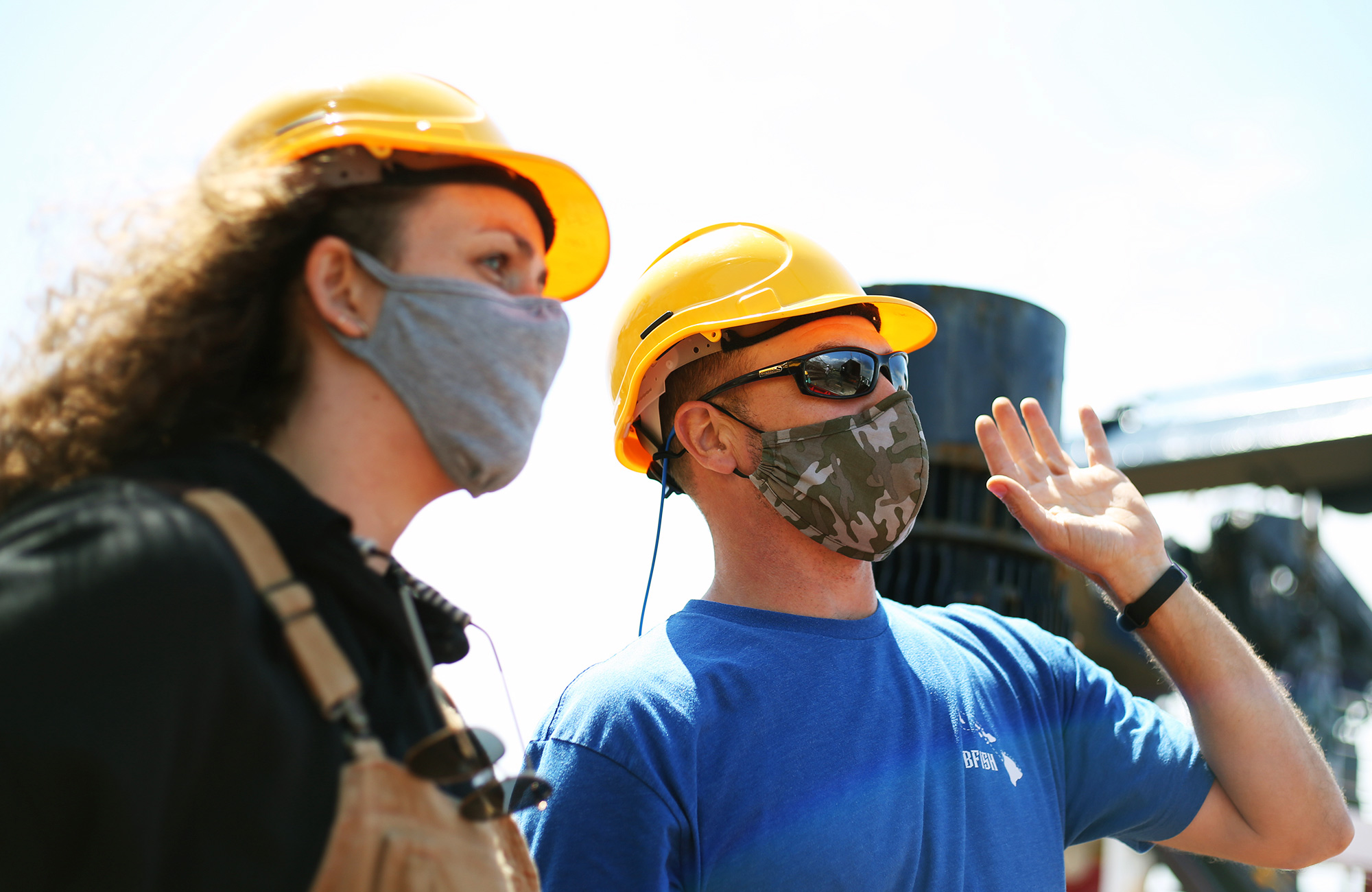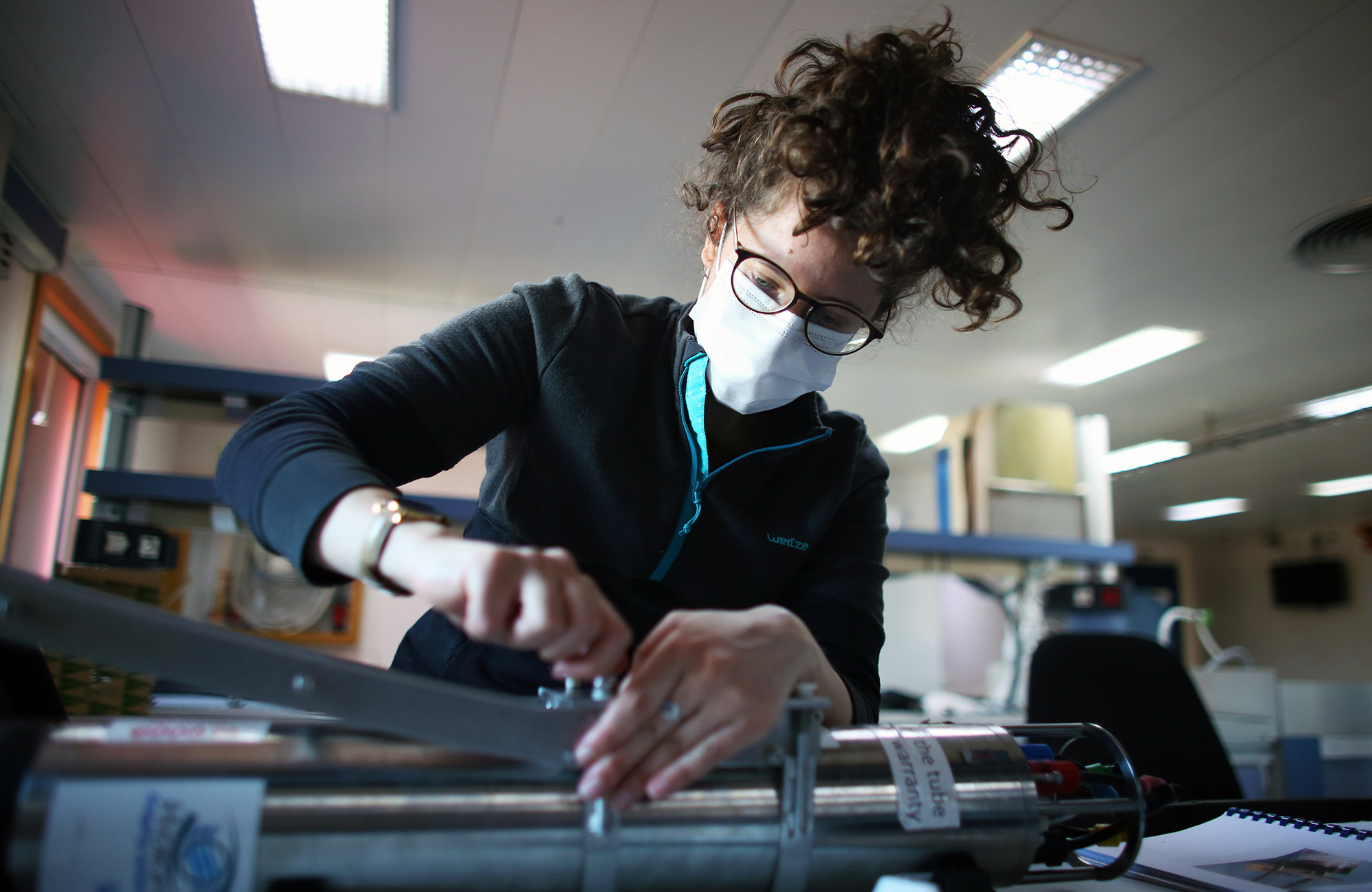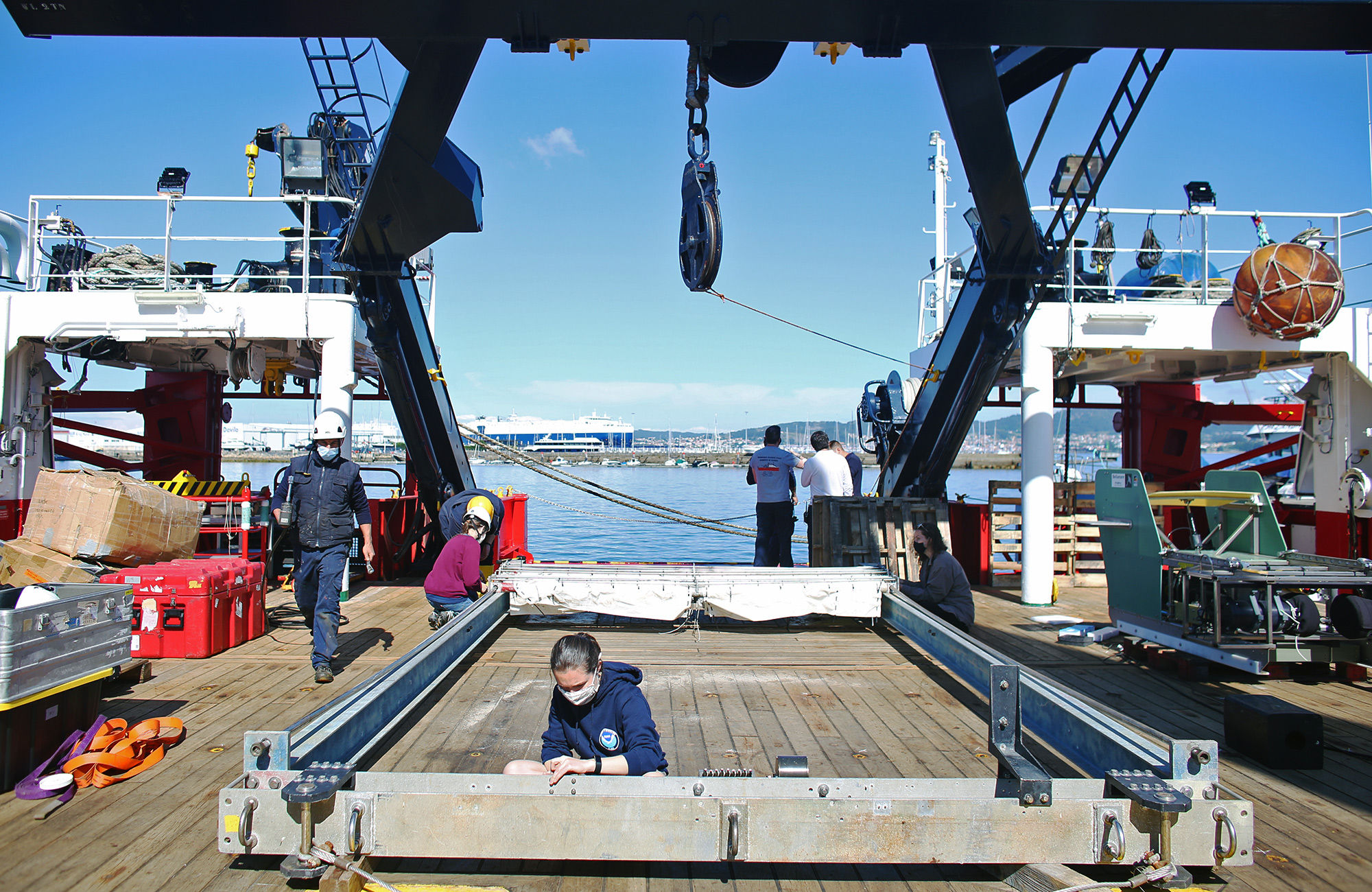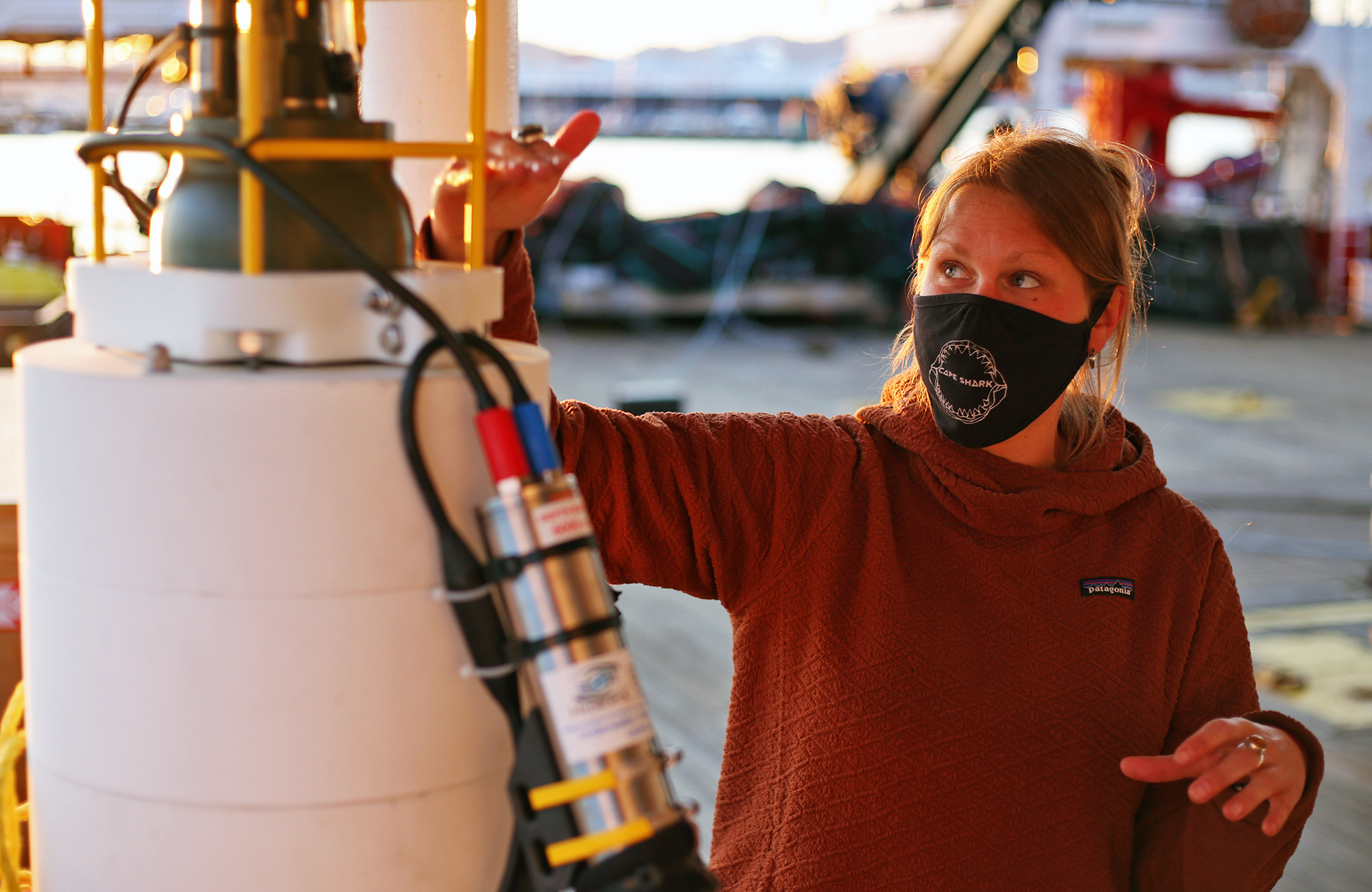Day 2: Labs at sea
By Michelle Cusolito
Conducting research at sea always requires extensive advance planning. Researchers essentially take their labs from buildings on land and set them up on a ship that rolls with the waves.
This particular expedition required even more planning than most. Several factors made it more complex:
- The ship, R/V Sarmiento de Gamboa, left from Vigo, Spain, so all the scientific equipment had to be shipped overseas.
- Three ships will rendezvous at the study location: the Porcupine Abyssal Plain (PAP). The science party and crew on each ship need to coordinate their operations.
- The science team and crew were required to quarantine for two weeks before boarding the ship.
“The first step is making sure I pack everything I think I’m going to need, because once I’m on this ship I can’t run to a hardware store and pick up something I forgot,” Woods Hole Oceanographic Institution senior research assistant Justin Ossolinski told me. “That’s particularly true this time, because of the pandemic. We were all in quarantine. We couldn’t run out and buy batteries, for example.”
Once the scientists and engineers gathered everything they needed, they loaded it into a 40-foot container that was shipped across the ocean to Rotterdam, Holland and then trucked to Vigo, Spain. Packing that container was a challenge because it needed to carry sensitive equipment, such as a mass spectrometer, alongside a 3,000 kilogram (7,000 pound) winch and the giant metal frame for MOCNESS.
Then, the container was delayed, which meant a delay in mobilization—the unloading of the container and setting up of labs. When the container finally arrived, the science team cheered and immediately sprang into action.
The ship’s crew used a crane to lift everything on board. As soon as a pallet landed on deck, the science team surrounded it and lugged the materials into the lab. The crew and science team moved eight tons of equipment in two and a half hours!
“For months we’ve had meetings for what the plan would be,” said Laetitia Drago, a PhD candidate at the Institut de la Mer de Villefranche (IMEV). “To see someone’s eyes light up as their gear came off the container…that was really exciting.”
After unloading the container, the pace slowed as the science team organized their lab spaces. The main lab, which was once a spacious, empty room, suddenly felt very cramped. Assorted crates, bins, and equipment filled nearly every open space. People occasionally bumped into each other, but the team methodically got the lab into shape. From day one, everyone worked well together.
“You have to be flexible,” said Justin. “This is a great group. I knew it would be, based on our interactions during quarantine.”
That was one benefit of our two-week quarantine: there was time to have planning meetings over Zoom and bond over quarantine woes through our WhatsApp group chat.
Laetitia’s equipment, which shipped from France and Germany, arrived before the main container, so she “got to play a little bit earlier than the others.”
By the second day of mobilization, we could see all the pieces coming together. In various parts of the ship, a team assembled the MOCNESS, co-lead scientist Heidi Sosik set up the Stingray sled, and Jessica Kozik tinkered with the TZEx.
Over the weekend, most teams worked late into the night to be sure everything was ready for our scheduled Monday departure. Even though the container arrived two days late, the ship left port only six hours later than originally planned.









